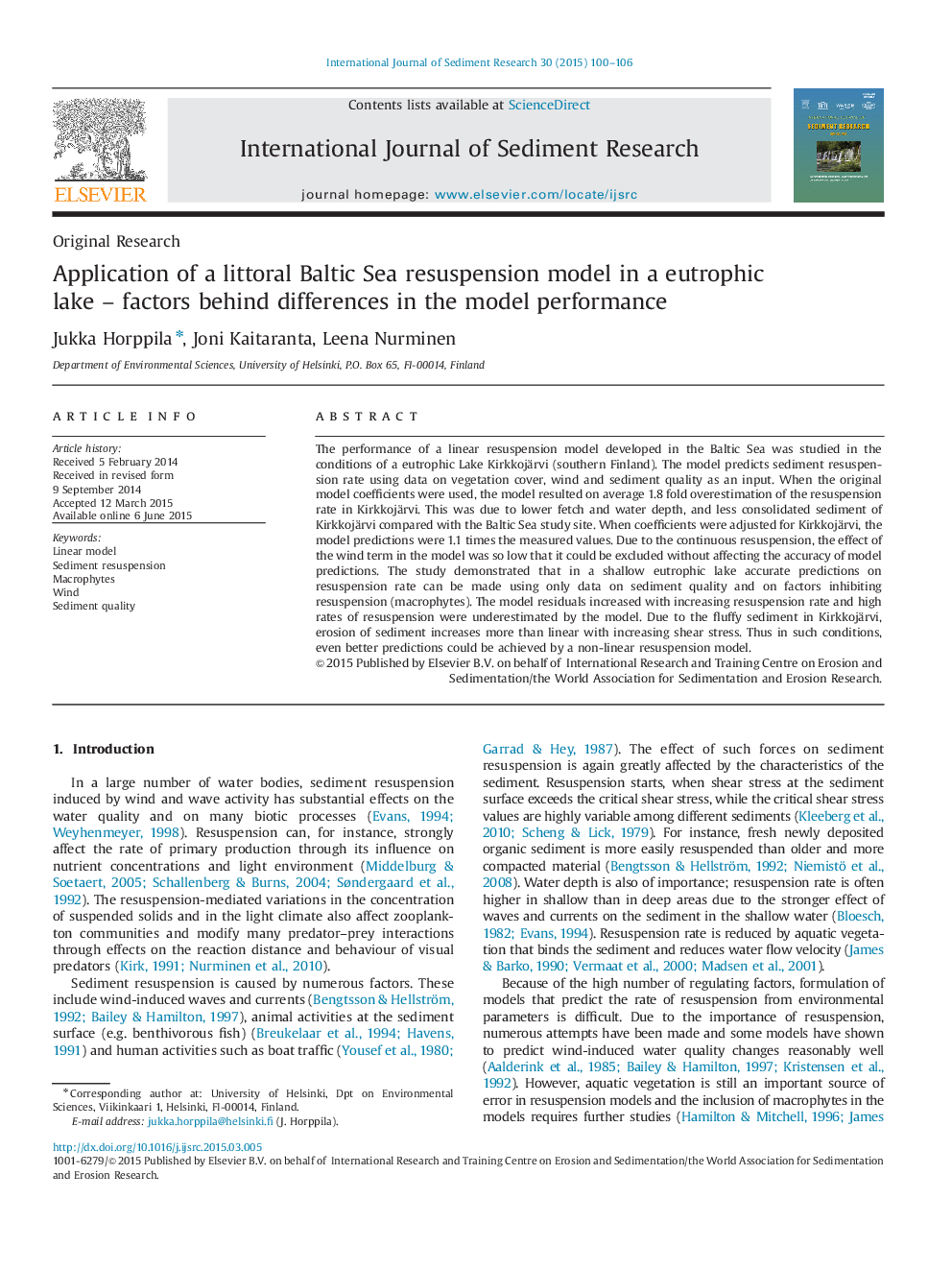| Article ID | Journal | Published Year | Pages | File Type |
|---|---|---|---|---|
| 4712752 | International Journal of Sediment Research | 2015 | 7 Pages |
The performance of a linear resuspension model developed in the Baltic Sea was studied in the conditions of a eutrophic Lake Kirkkojärvi (southern Finland). The model predicts sediment resuspension rate using data on vegetation cover, wind and sediment quality as an input. When the original model coefficients were used, the model resulted on average 1.8 fold overestimation of the resuspension rate in Kirkkojärvi. This was due to lower fetch and water depth, and less consolidated sediment of Kirkkojärvi compared with the Baltic Sea study site. When coefficients were adjusted for Kirkkojärvi, the model predictions were 1.1 times the measured values. Due to the continuous resuspension, the effect of the wind term in the model was so low that it could be excluded without affecting the accuracy of model predictions. The study demonstrated that in a shallow eutrophic lake accurate predictions on resuspension rate can be made using only data on sediment quality and on factors inhibiting resuspension (macrophytes). The model residuals increased with increasing resuspension rate and high rates of resuspension were underestimated by the model. Due to the fluffy sediment in Kirkkojärvi, erosion of sediment increases more than linear with increasing shear stress. Thus in such conditions, even better predictions could be achieved by a non-linear resuspension model.
